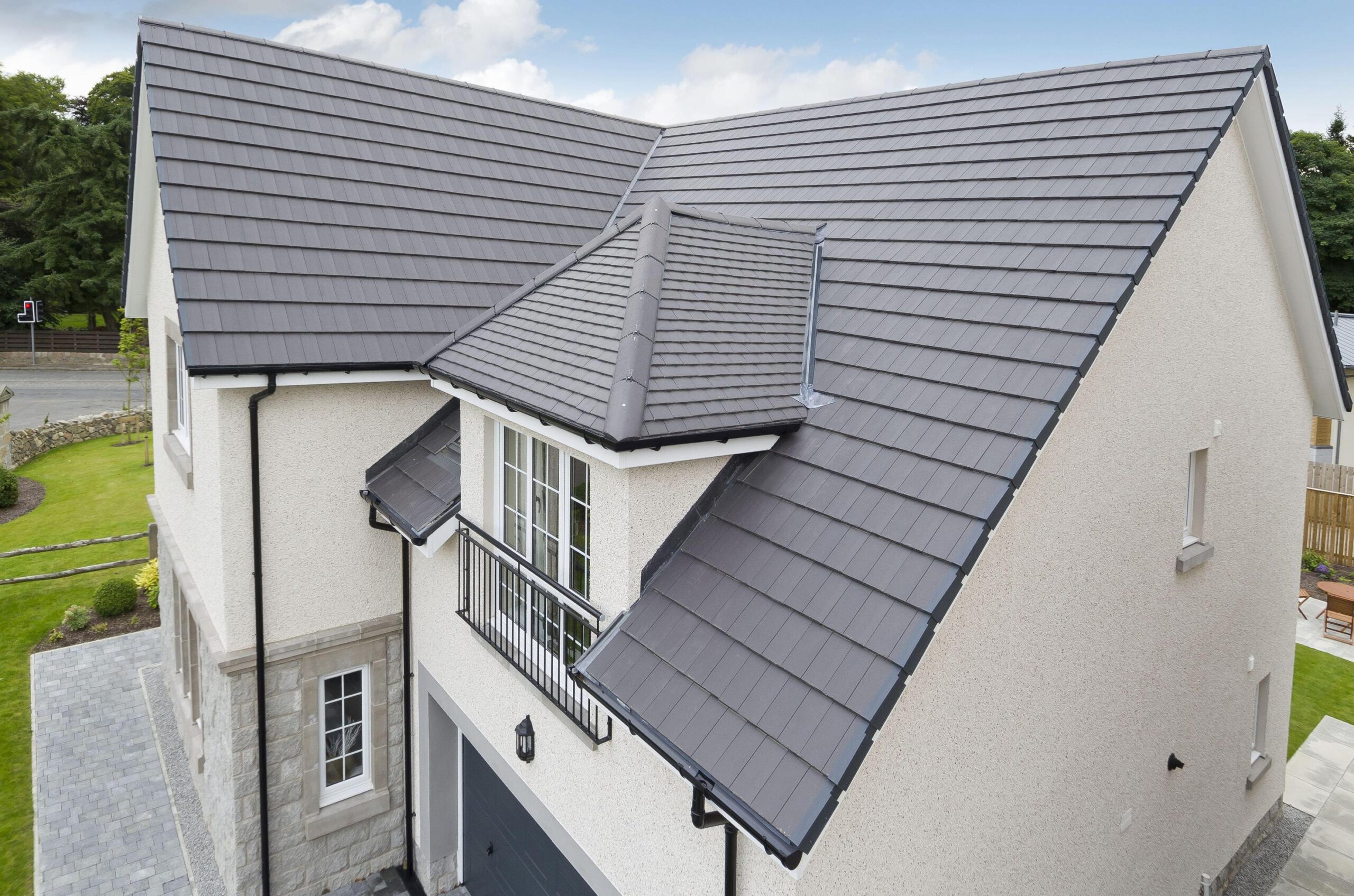Roof protect a building against rain, snow, sunlight, and extremes of temperature. It also provides insulation to help regulate indoor temperature and reduce energy consumption.

The rafters are the primary structural components of your roof. They extend from the king post to form a triangle that determines the roof’s apex.
A flat roof has a low slope, usually 1:80 fall, which makes it more effective at draining rainwater than a pitched or gabled roof. It’s a popular roofing option for outbuildings such as garages and sheds, but it can also be used on extension roofs, house renovations, and new builds. However, it’s important to weigh the pros and cons of a flat roof before choosing this as your preferred roofing solution.
A good quality flat roof should be able to withstand heavy rainfall and snow falls, but it may require different roofing materials than a pitch roof. The type of flat roof you choose will depend on your climate and the type of construction you’re looking to build.
Traditionally, flat roofs have been constructed from built-up felt. They are durable and cost-effective but can be vulnerable to heat damage. However, there are now a number of other types of flat roofing available to homeowners, including EPDM rubber and PVC membranes. These are more durable than traditional felt roofs and can be fitted with a waterproof coating to protect your home from the elements.
Single-layer membrane flat roofs are made from large factory-made sheets of EPDM synthetic rubber or polymer-based plastics such as PVC or thermoplastic ethyl propylene. The membrane is bonded to the underlying roof structures using hot or cold seaming processes. These single-ply flat roofs are a popular choice for commercial buildings and can be used in residential buildings too.
A benefit of a flat roof is that it provides a usable space for outdoor living and storage. It’s a great option for people on small blocks who want to maximise the space they have in their garden or for housing large household equipment such as water tanks. However, it’s important that any subsequent work to the roof, such as installing through-roof service pipes or cables or plant like air conditioning units, is done by an experienced roofer. Failure to do so could result in leaks and expensive repairs down the line.
One downside of a flat roof is that it’s not as energy-efficient as a pitched or gabled roof. This is because a flat roof will be exposed to sunlight all day long, meaning your home will absorb the heat rather than shedding it. This can be a big problem during the summer months and will lead to inflated electricity bills. It is also a good idea to have a solar panel system installed on your roof to help offset this issue.
Sloping Roof
A sloping roof is a great way to maximize space in your home. It allows you to have more living and storage areas without having to do a major renovation. It also provides a modern and stylish look for your house. Moreover, it can help you save energy and money on heating and cooling costs.
A sloping or pitched roof is one that has a gradual slope from the front of the building to the back. It is often divided into two parts by the ridge line, which separates the sides of the roof into distinct sections. Various styles of sloping roofs can be found in different types of houses. The most common type is the gable roof, which has two evenly sized sloping sides. This type is often seen in older buildings, but it is also popular for newer homes.
The main benefit of sloping roofs is that they allow water and snow to flow down naturally, which makes them safer than flat roofs. They are also less likely to form ice dams, which can cause wood rot or attic leaks. Additionally, sloping roofs can be more comfortable in hot weather, as they allow air to flow through the house more easily.
To build a sloping roof, first you need to prepare the framework. This involves calculating the sizes of the trusses and building the frames. Then you can start laying the plywood sheets and shingles. Once the plywood and shingles are in place, you can install flashing around the edges to protect the roof from rain and debris.
The Mansard roof is another sloping roof that is more popular. It has four sloping sides and is similar to the Gambrel roof in many ways. This type is perfect for countries with mild climates and can be used to create lofts and other rooms.
A sloping roof is easier to install than a flat one, but it requires a good amount of planning and construction work. It must have a slight slope to direct rainwater into scuppers and roof drains so that it doesn’t infiltrate the house.
Gambrel Roof
A Gambrel roof is a type of roof with two slopes on each side. It is often used in barns and farmhouses, but it can be found on homes as well. This style of roof offers a unique look that is sure to turn heads. It is also fairly easy to build and can be a cost-effective choice for homeowners who are looking to save money.
This type of roof can be a good choice for a home that needs to be built in a tight space. It can allow more storage room and living space inside the home by allowing for a larger attic area. It also has a distinct barn look that can add character to any home or building. This style of roof is also an ideal choice for homes that need extra protection from weather events.
The gambrel roof is similar to a Mansard roof in many ways, but there are some differences as well. One main difference is that a gambrel roof will have vertical gable ends, while a Mansard roof will not. A gambrel roof will also usually overhang the facade of the building, while a Mansard will not.
Another difference between these two types of roofs is that a gambrel roof has a much steeper upper slope than the lower slope. This can offer more space for attic storage or even a second floor of the home. The gambrel roof is also an excellent option for homeowners who are looking to increase the amount of storage space in their home.
While a gambrel roof may not be as popular as other roofing options, it can still provide an attractive look for any home or building. This roof type is also quite durable and can last for years with proper care and maintenance. It can also be an excellent choice for homeowners who are looking to save money on their energy bills. This is because a gambrel roof can help to cut down on heating and cooling costs by keeping the home at a comfortable temperature.
Tile Roof
Tile roofs add character and style to a home, with many different styles to choose from. They’re also energy efficient, with a high insulating value that reduces cooling and heating costs. They’re not cheap, but they are long-lasting and can increase a home’s resale value.
Compared to asphalt shingles, tile roofs are more durable, with lifespans of up to 100 years. They’re a good choice for a variety of climates, because they help regulate building temperature and shed rainwater quickly. They also reflect solar energy, so you can save on cooling bills during the summer.
Clay and concrete tiles are available in a wide range of styles, colors, and textures to suit any aesthetic goal. Flat concrete tiles are rectangular and flat on one side, making them a durable option for sloped roofs. Barrell concrete tiles, meanwhile, are popular for Spanish and Mediterranean-style roofs because of their rounded, cylindrical shape. They’re more expensive than other tile roofing materials, but they offer a unique design and a long lifespan.
Another type of tile roofing is slate, a metamorphic rock that can be cut and shaped into various designs. Slate can be carved to resemble wood or stone, and it is highly durable and fire-resistant. Unlike clay or concrete tiles, slate does not fade over time.
Although durable and attractive, tile roofs require regular maintenance to keep them in good condition. This includes cleaning and inspecting the roof for signs of wear and damage. Tiles that have been cracked or damaged may need to be repaired or replaced, but this can be costly.
A tile roof’s thickness makes it a good thermal insulator, so it helps regulate building temperature. It’s also less likely to attract dust and other airborne debris, which can affect indoor air quality.
Tile roofs are heavy, so they must be supported by a strong structural framework. They’re also susceptible to damage from falling branches and pressure from pedestrians. Choosing a reputable roofer when choosing a tile roof is important since they can install and repair these kinds of roofs safely.


